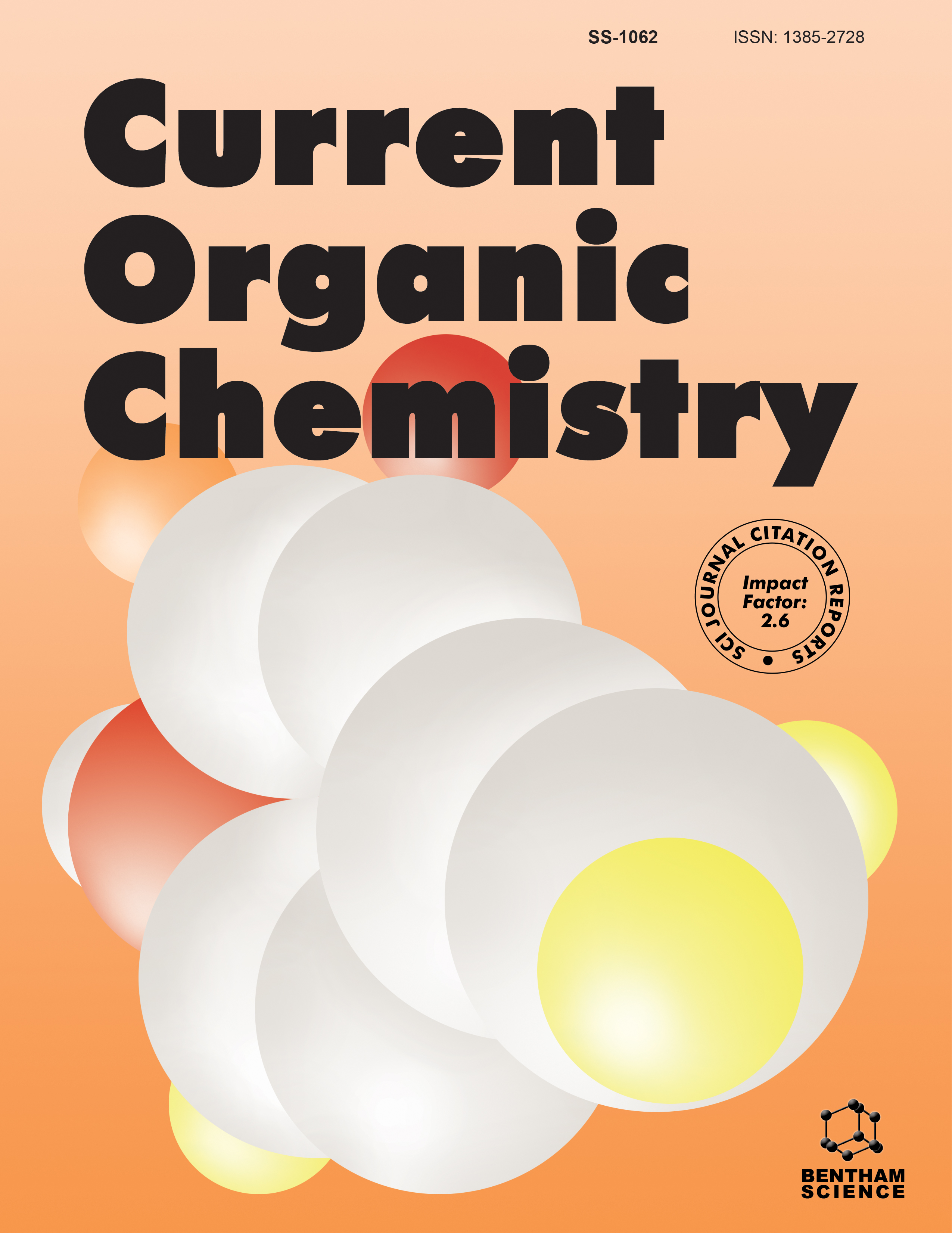- Home
- A-Z Publications
- Current Organic Chemistry
- Previous Issues
- Volume 10, Issue 15, 2006
Current Organic Chemistry - Volume 10, Issue 15, 2006
Volume 10, Issue 15, 2006
-
-
Editorial [Hot Topic: Advances in Asymmetric Synthesis Using Organoselenium Chemistry (Guest Editor: Pete Silks)]
More LessOrganoselenium chemistry continues to attract the attention of many researchers. Perhaps the underlying reason for this is the broad interest in the unique applications of selenium to inorganic, biological, and organic chemistries. Inorganic selenium complexes range from metal complexes and new materials (organic semiconductors) to quantum dots. Since the discovery of selenium as an essential trace element, the role of Read More
-
-
-
New Developments with Chiral Electrophilic Selenium Reagents
More LessAuthors: Danielle M. Browne and Thomas WirthThis review describes the development of enantiomerically pure selenium reagents as electrophiles in stereoselective synthesis. It outlines the addition of selenium electrophiles to alkenes, which can be used as part of key reactions in various transformations. Different nucleophiles can be employed in the addition reactions including oxygen, nitrogen and carbon nucleophiles. Furthermore, it has been shown that selenocycli Read More
-
-
-
Asymmetric Synthesis of Chiral Organoselenium Compounds
More LessAuthors: Chengjian Zhu and Yijun HuangChiral organoselenium compounds can be attained from three types of asymmetric synthesis. Chiral substratecontrolled methods, chiral auxiliary-controlled methods, and chiral catalyst-controlled methods toward optically active organoselenium derivatives were illustrated. The strategy and classification of methods underlying all asymmetric synthesis therefore involve enantiomerically pure compounds to influence the stere Read More
-
-
-
Enantioselective Synthesis Mediated by Catalytic Chiral Organoselenium Compounds
More LessAuthors: Antonio L. Braga, Diogo S. Ludtke and Fabricio VargasSelenium-based methods have developed rapidly over the past few years and certain features of chiral selenium-containing compounds make these reagents particularly valuable for efficient stereoselective reactions. Recent advances in stereoselective transformations involving one-pot selenenylation-deselenylation sequences, which occur using only catalytic amounts of the optically active diselenides in the synthesis of Read More
-
-
-
Phenylselenoethers as Precursors of Acyclic Free Radicals. Creating Tertiary and Quaternary Centers Using Free Radical-Based Intermediates
More LessIn the last two decades, enantioselective and diastereoselective free radical-based processes have started to emerge as viable methods to create stereogenic centers. To this end, chemists have taken advantage of the homolytic carbon-selenium bond cleavage as an efficient way to generate carbon-centered radicals. The reactivity of the radicals generated from β-hydroxy (or alkoxy) α-phenylseleno (or α-halo) esters in hydro Read More
-
-
-
Syntheses and Properties of Phosphinoselenoic Chlorides, Acids, and Their Salts
More LessAuthors: Toshiaki Murai and Tsutomu KimuraThe synthetic methods for phosphinoselenoic chlorides, acids, and alkali metal and ammonium salts are overviewed. The addition of elemental selenium to trivalent chlorophosphines readily took place to give phosphinoselenoic chlorides. P-Chiral chlorides were efficiently prepared by the one-pot reaction of dichlorophenylphosphine or phosphorus trichloride with elemental selenium and Grignard reagents. The amination o Read More
-
-
-
Current Progress in the Acetate/Methyl Ketone Aldol Reaction
More LessAuthors: David B. Kimball and Louis A. “Pete” Silks IIIThe aldol reaction of acetate and methyl ketone-based donors with aldehyde acceptors is reviewed. Emphasis is placed on major advances reported in the last 10-15 years. Several methods for inducing chirality at the newly formed stereogenic center are discussed, including popular alternate methods for equivalent syntheses. Different methods for stereospecific synthesis are compared in terms of yield, selectivity, e Read More
-
-
-
Utilization of Nonbonded Interactions Involving Organoselenium Compounds
More LessNonbonded interactions involving selenium have been recognized for many years and are known to involve a number of groups and atoms that form close contacts to the chalcogen atom. With substantial improvements in high field NMR spectroscopy and single crystal X-ray diffraction, enabling such techniques to become ever more accessible, further understanding of the role that these interactions play in the chemistr Read More
-
Volumes & issues
-
Volume 29 (2025)
-
Volume 28 (2024)
-
Volume 27 (2023)
-
Volume 26 (2022)
-
Volume 25 (2021)
-
Volume 24 (2020)
-
Volume 23 (2019)
-
Volume 22 (2018)
-
Volume 21 (2017)
-
Volume 20 (2016)
-
Volume 19 (2015)
-
Volume 18 (2014)
-
Volume 17 (2013)
-
Volume 16 (2012)
-
Volume 15 (2011)
-
Volume 14 (2010)
-
Volume 13 (2009)
-
Volume 12 (2008)
-
Volume 11 (2007)
-
Volume 10 (2006)
-
Volume 9 (2005)
-
Volume 8 (2004)
-
Volume 7 (2003)
-
Volume 6 (2002)
-
Volume 5 (2001)
-
Volume 4 (2000)
Most Read This Month
Article
content/journals/coc
Journal
10
5
false
en


